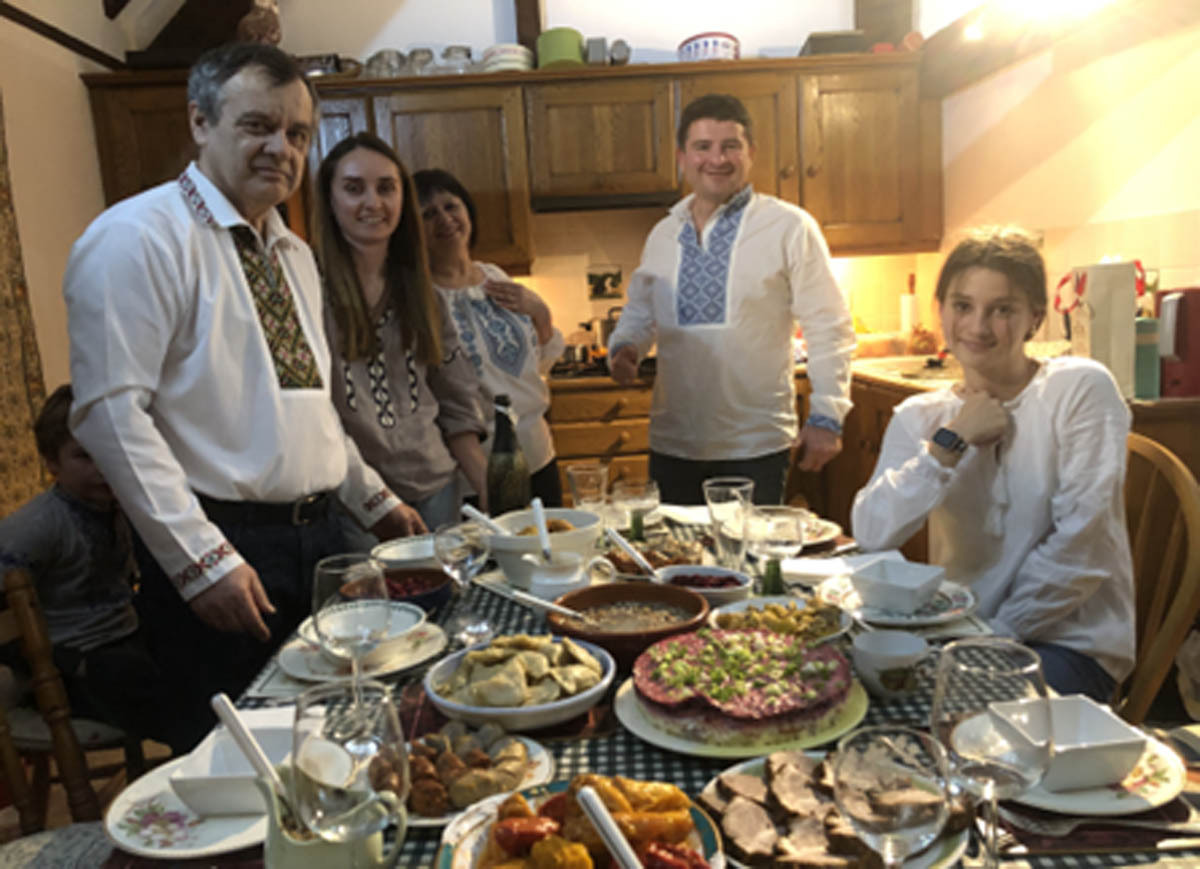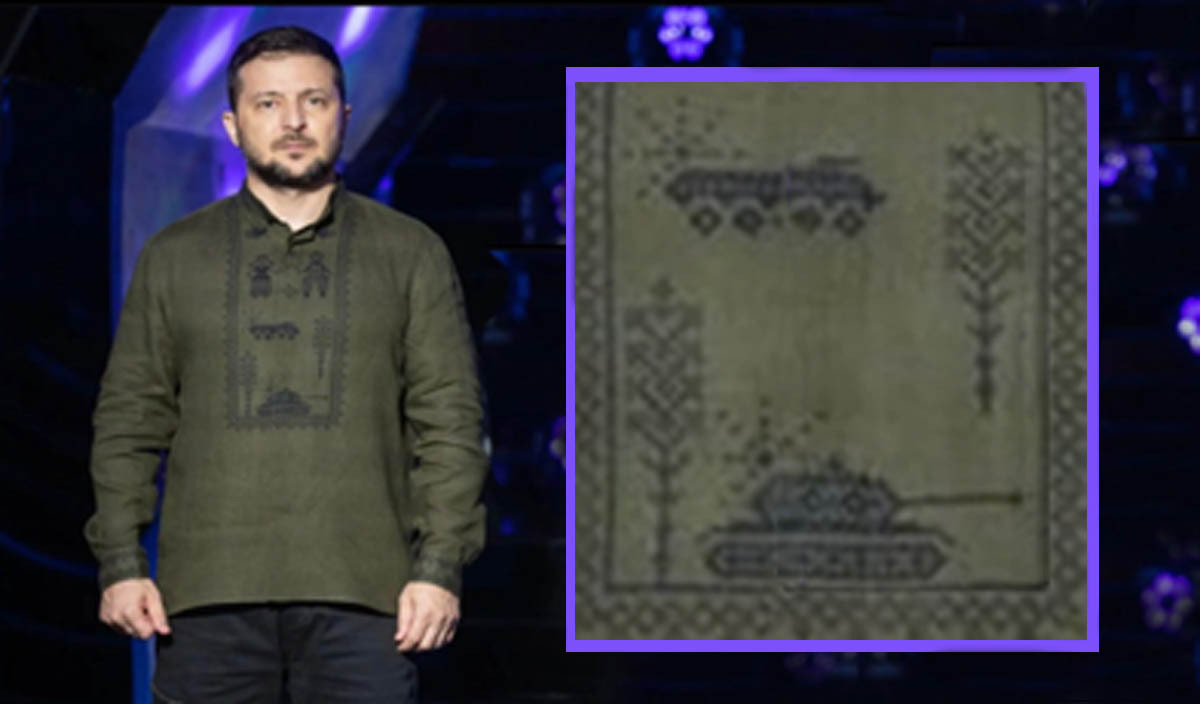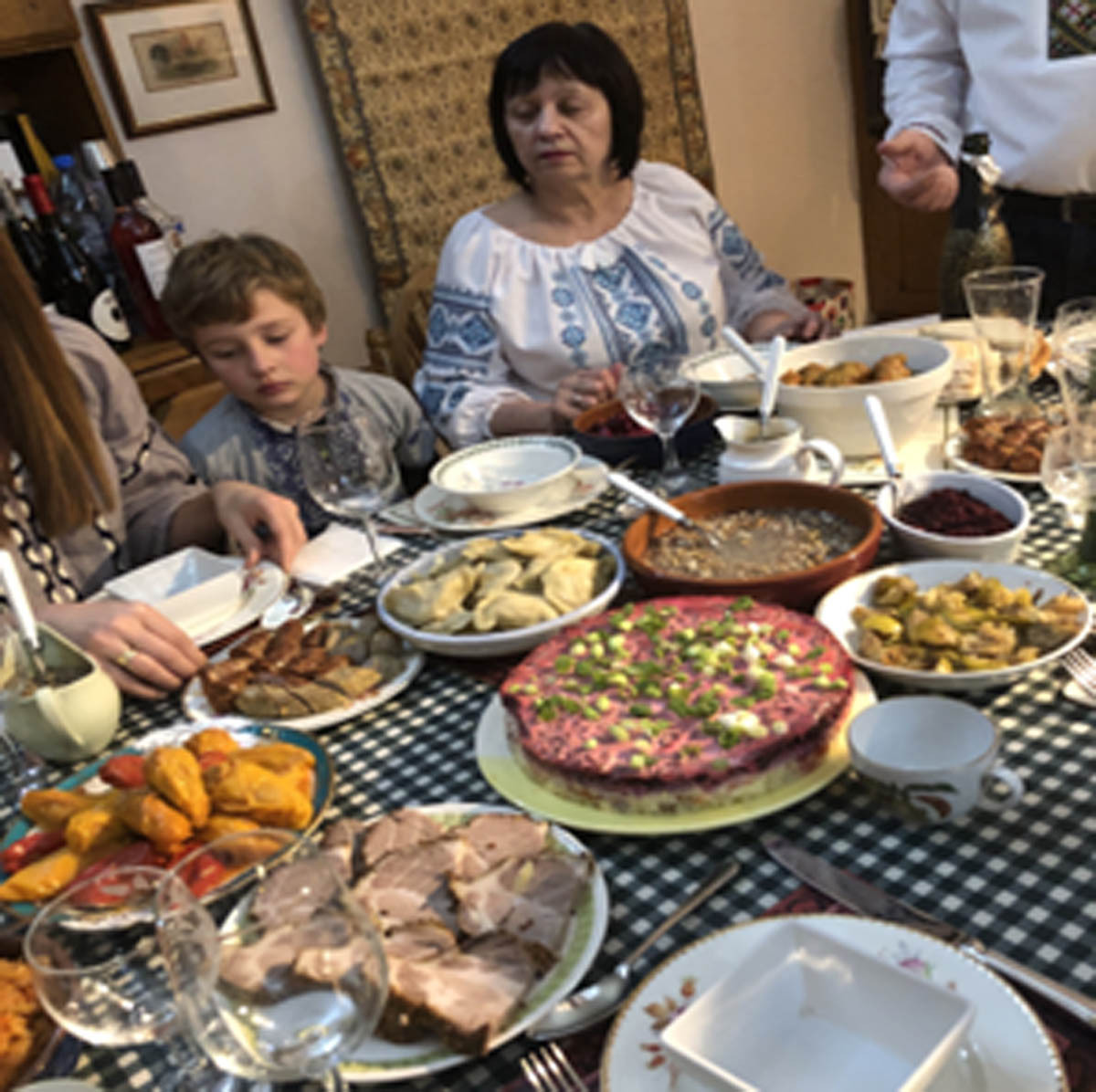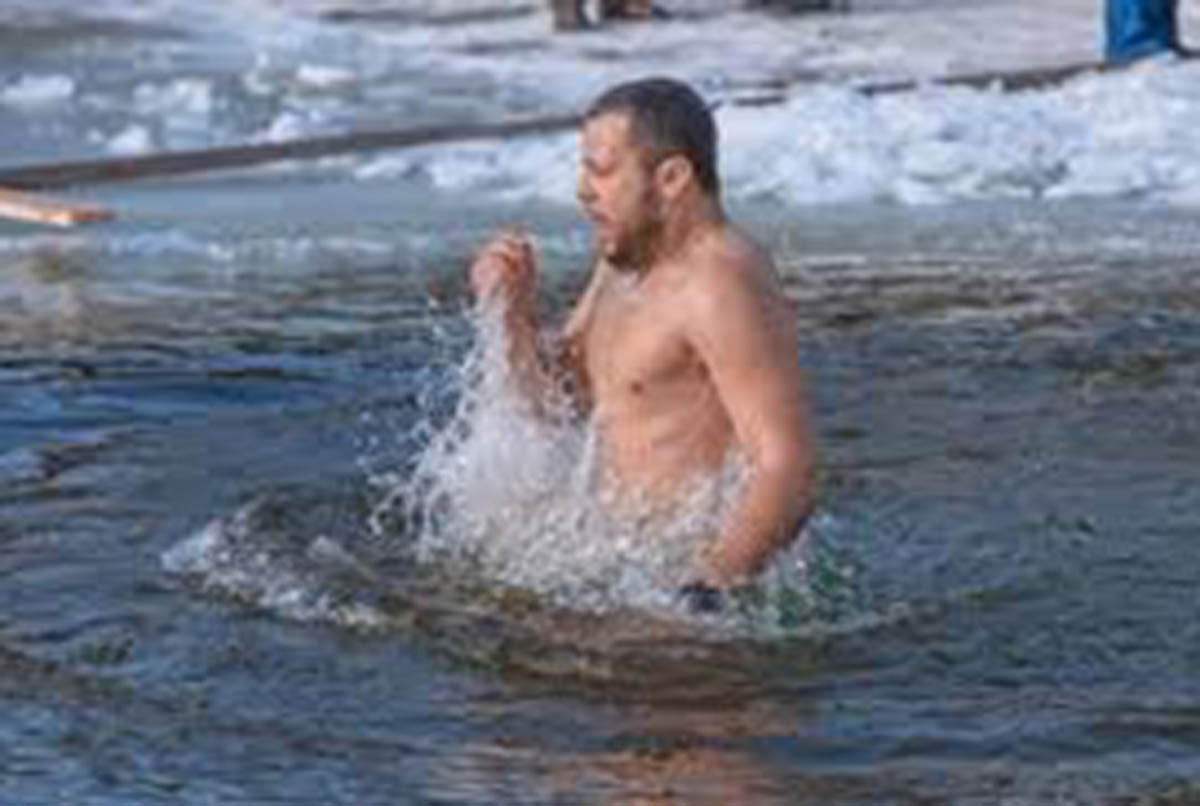
The head of the Ukrainian Orthodox Church gave special dispensation for Ukrainian refugees to celebrate Christmas on 25 December instead of on the customary date, so here in Somerset we treated our guests to an authentic English Christmas meal of turkey with all the trimmings, crackers, carols, and stockings. Our tradition of kissing under mistletoe was unknown to them and they were rather perturbed at the flaming of the Christmas pudding. On our ‘Twelfth Night’ they kindly reciprocated by inviting us to join them in a traditional Ukrainian Christmas meal. We felt very privileged to be included in their celebration, which was steeped in historic and religious symbolism.
In Ukraine, the main day for exchanging presents is the Eve of St Basil’s Day (our New Year’s Day). Then, on Orthodox Christmas Eve (6 January), they eat a special twelve-course meal consisting exclusively of vegetables: lots of cabbage and beetroot. This represents a gesture of austerity before the main celebratory meal on Christmas Day (7 January).
Our hosts, three generations of the family, all wore their traditional embroidered smock shirts (Vyshyvanka), usually worn on Ukraine National Day and important enough to be included in the belongings of our refugee guests.
And here is the Ukrainian president Volodymyr Zelenskyy in his version, in combat green, complete with embroidered tank and armoured personnel carrier.

The whole family joined in singing the long-established Christmas carol (‘Good Evening’), usually sung by carol singers moving from house to house:
Master of the house, we wish you a good evening.
Rejoice and sing! All the earth rejoice!
The Son of God now is born.
Set upon your table all your finest linen.
Bring us out some bread now, warm and brown and crusty.
Celebrate the season: three great feasts together.
First the feast of Christmas, birth of our king Jesus.
Next the feast of Basil, saint from Cappadoccia.
Then the feast in January of our lord’s Epiphany.
First the feast of Christmas brings us consolation.
Next the feast of Basil brings sweet jubilation.
Finally, Epiphany reminds us of our destiny.
This was surprisingly moving as we found out that, for some of the family, it was the first Christmas they had ever spent outside Ukraine.
The meal started with just three spoonfuls of kutya, a broth of wheat, walnuts, poppy seeds, raisins and honey. This dish is a symbol of unity of generations: past ones and coming ones. It is also a symbol of life, of victory over death, and ensures a good harvest of this produce later in the year. It is also eaten at the Feast of Jordan (celebrating Jesus’s christening) and, curiously, also at funerals.
The meal itself was comprised of many, mainly cold, dishes. Meat was allowed, in our case duck and roast pork, and a variety of salad dishes. Perhaps the most unique and unfamiliar were a salad of diced herring under beetroot, shuba (herring under a fur coat), and holodets, chicken in aspic. Beetroot featured in a variety of forms, delicious when combined with horseradish, and it seems that no meal is complete without cabbage or potato dumplings, vareniki.

As a result of previous calendar changes, the Ukrainians seem to have several Old Year and New Year’s Days, and then the Christmas festival finally ends at Epiphany (Theophany). There are mass symbolic baptisms involving total immersion in the Dnipro River, sometimes in ice-holes cut by the priest with a chainsaw. Fortunately, we have not been invited to accompany our guests in this ritual on 19 January!

We are sure everyone will join us in the hope that displaced Ukrainians’ future Christmases are spent away from home by choice and not necessity. Editor-in-chief





